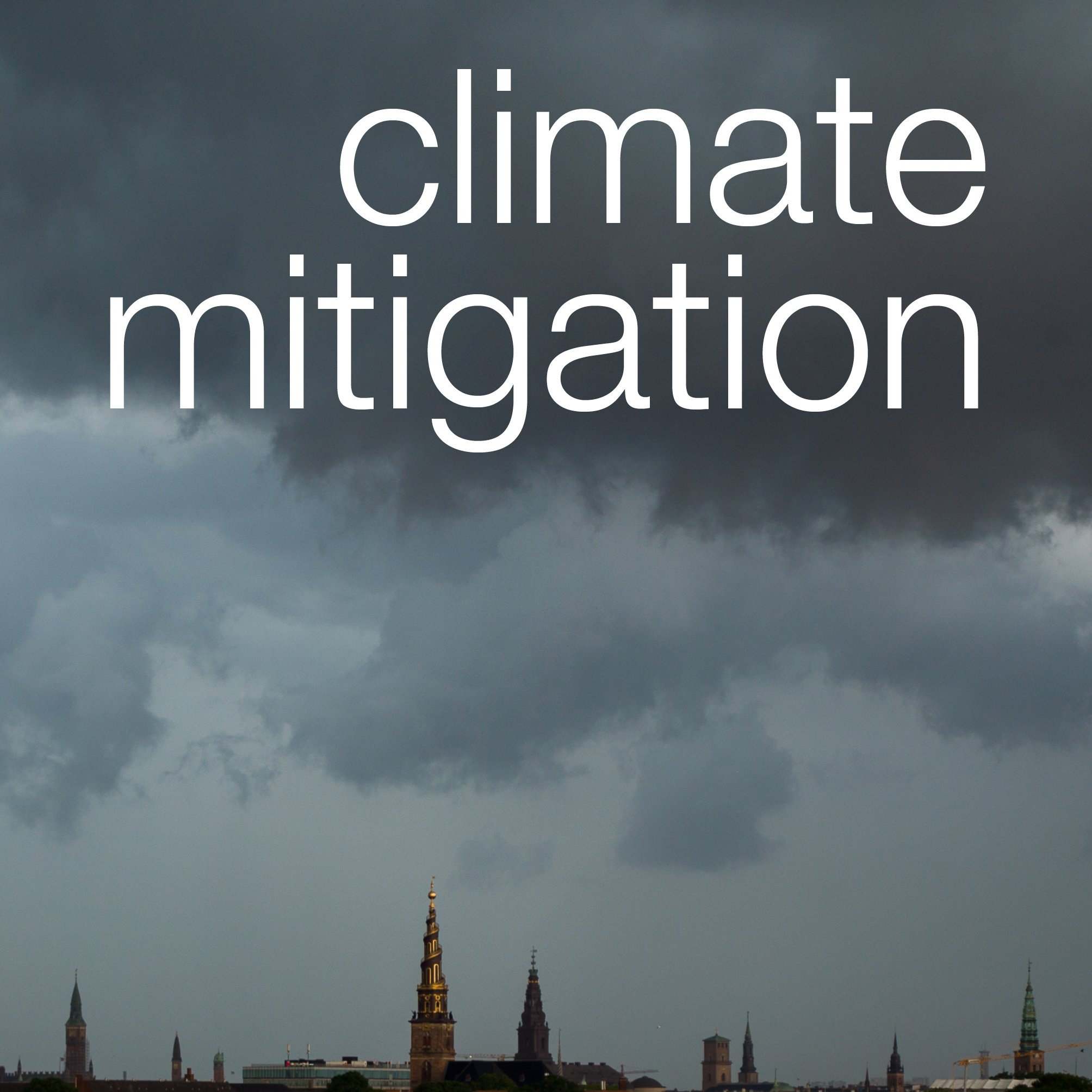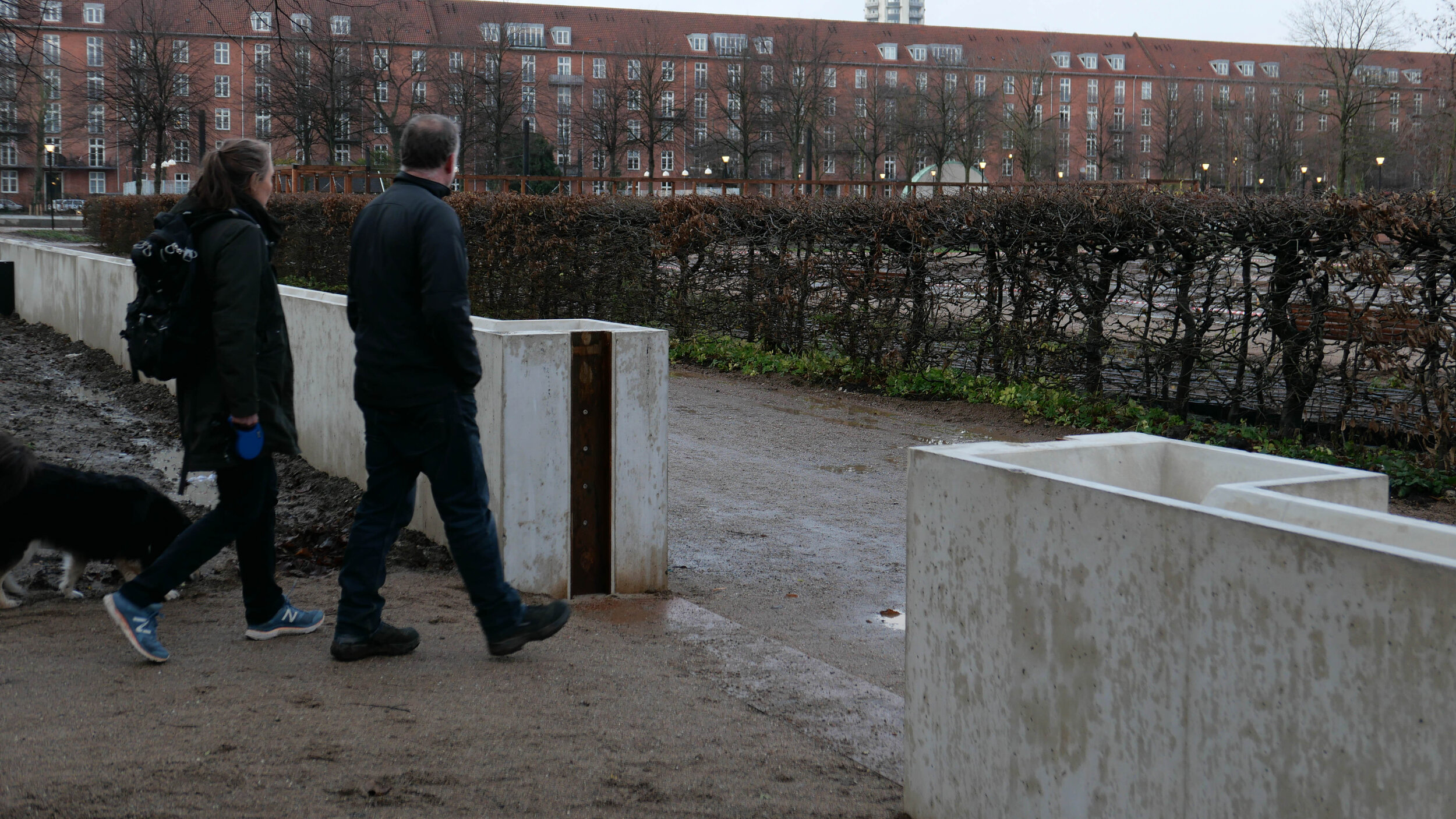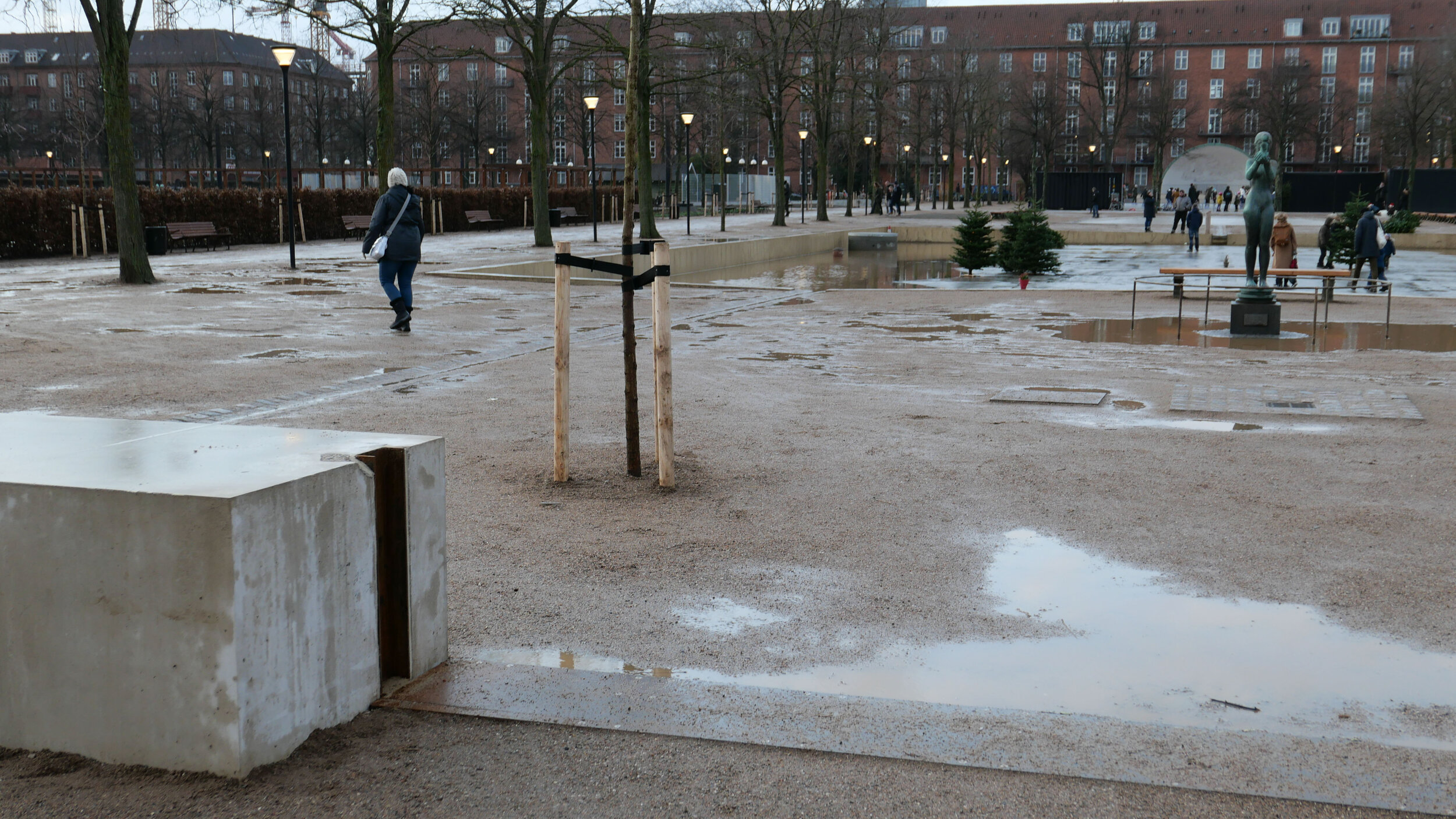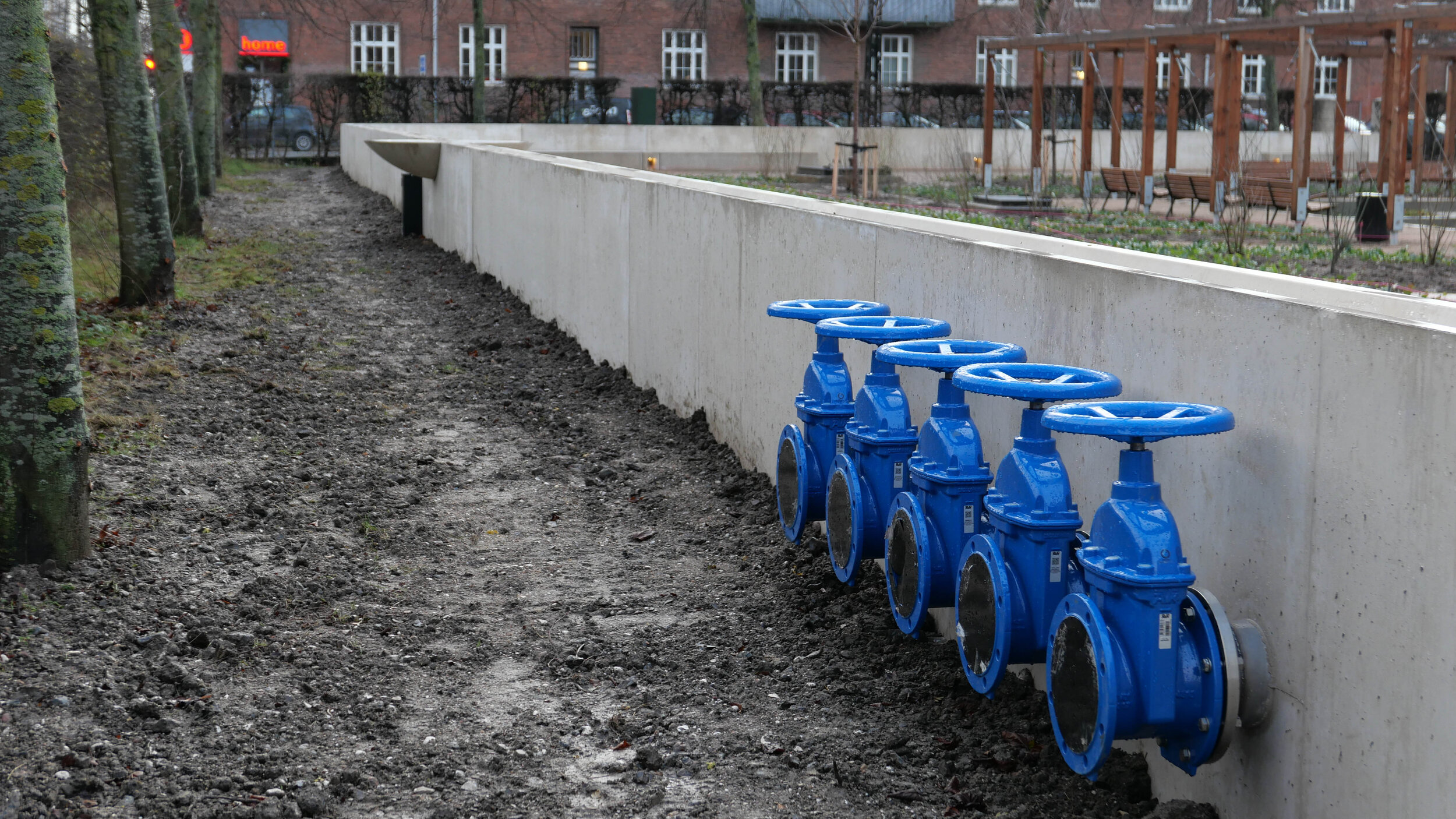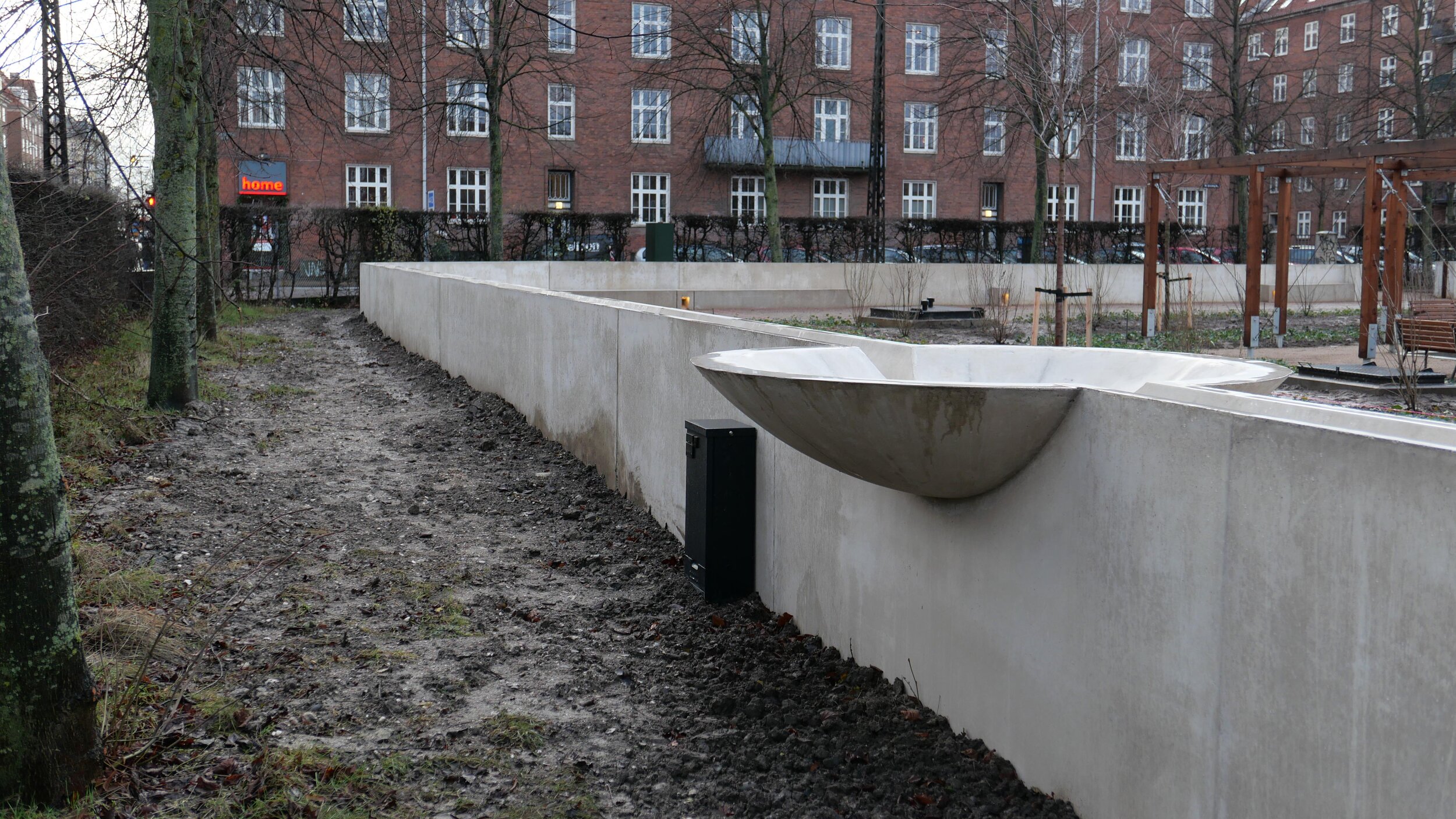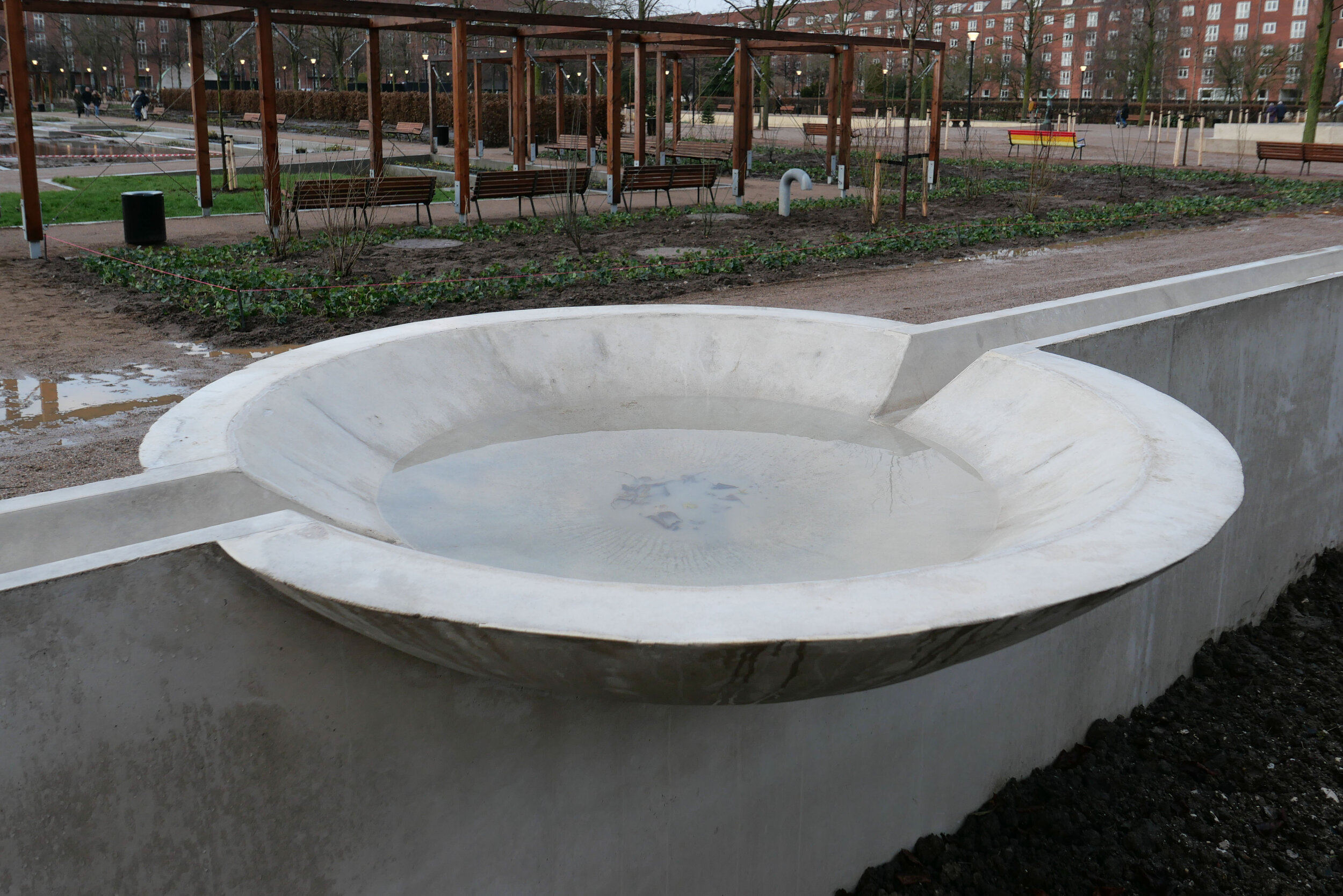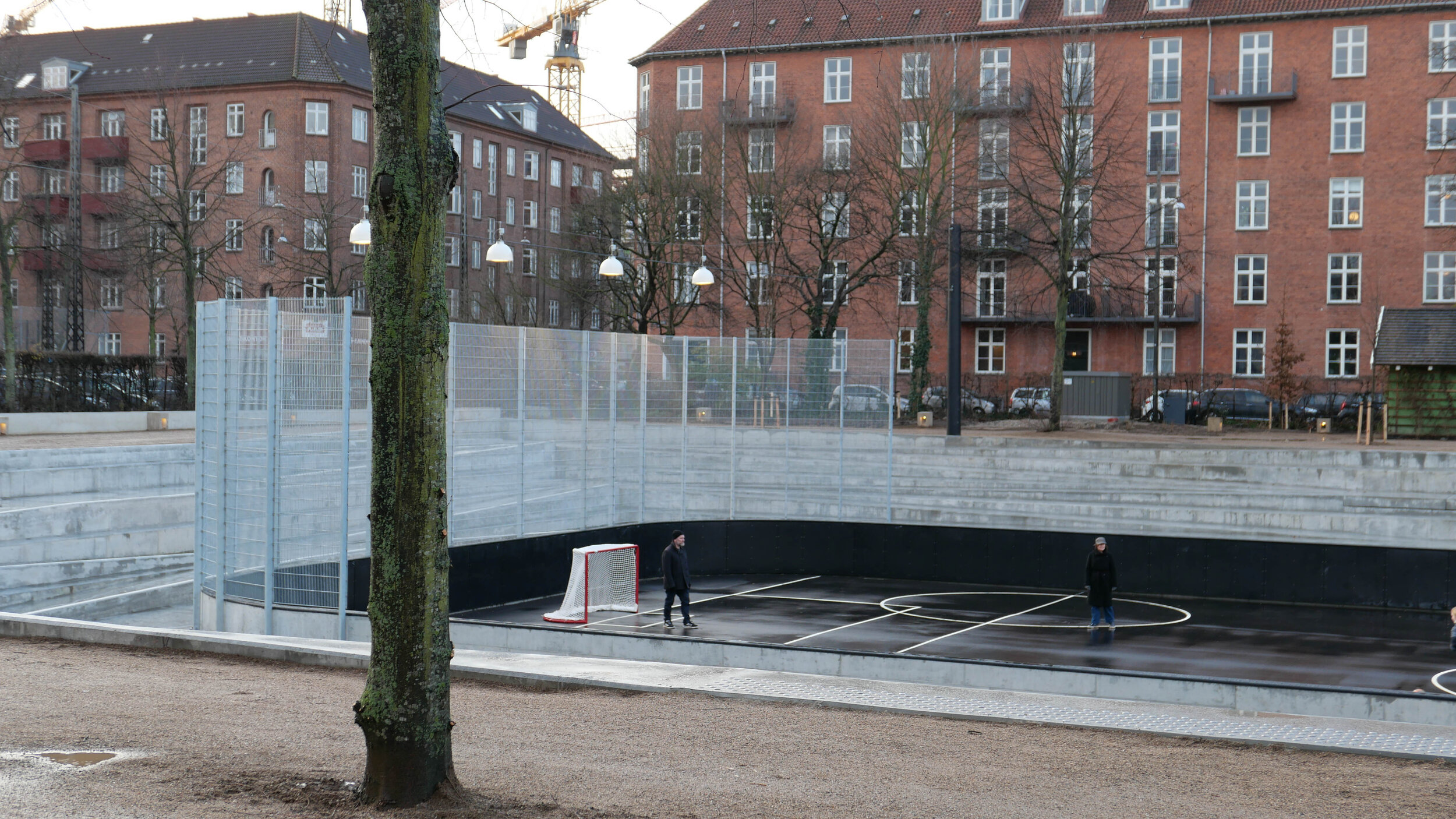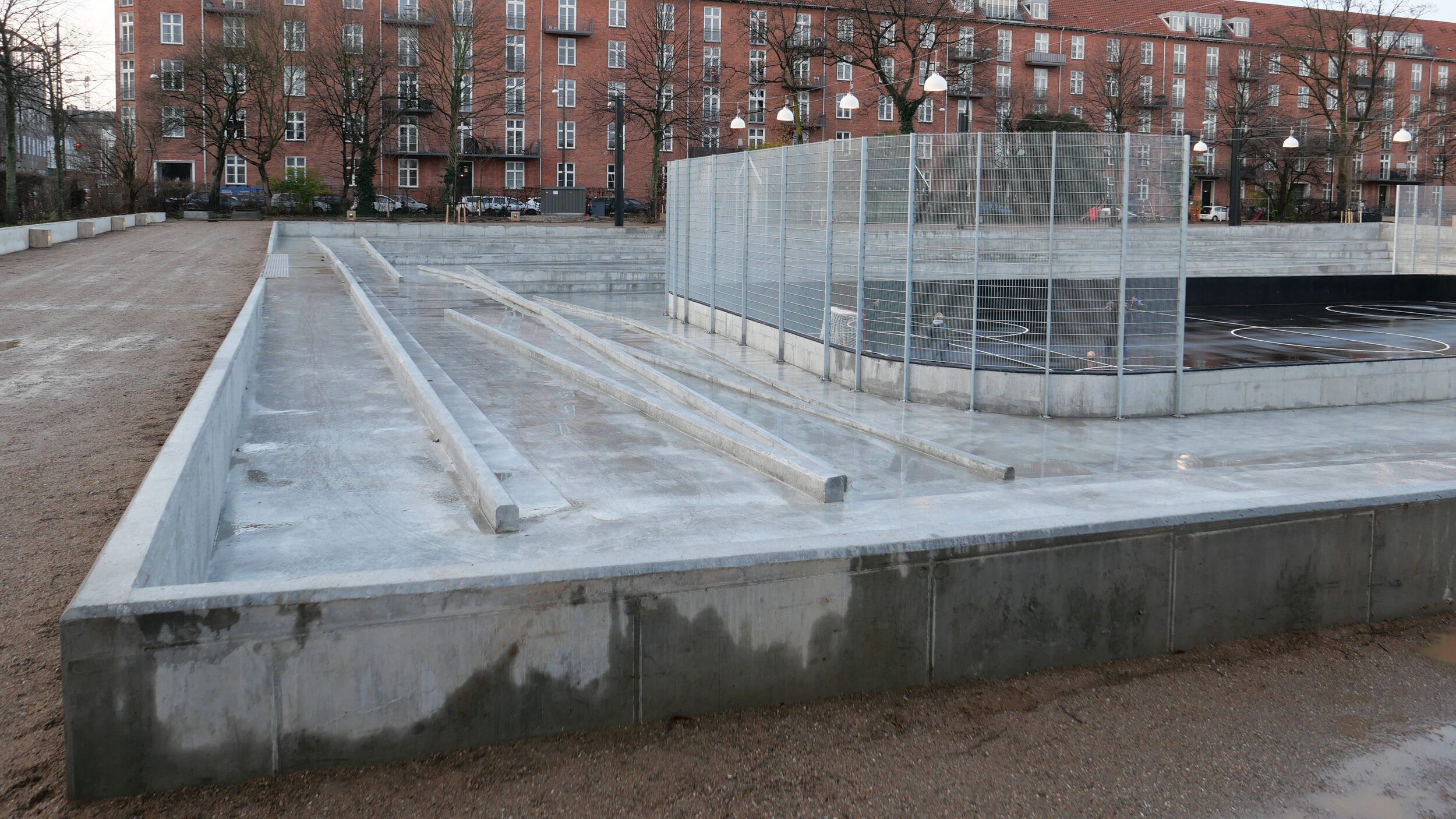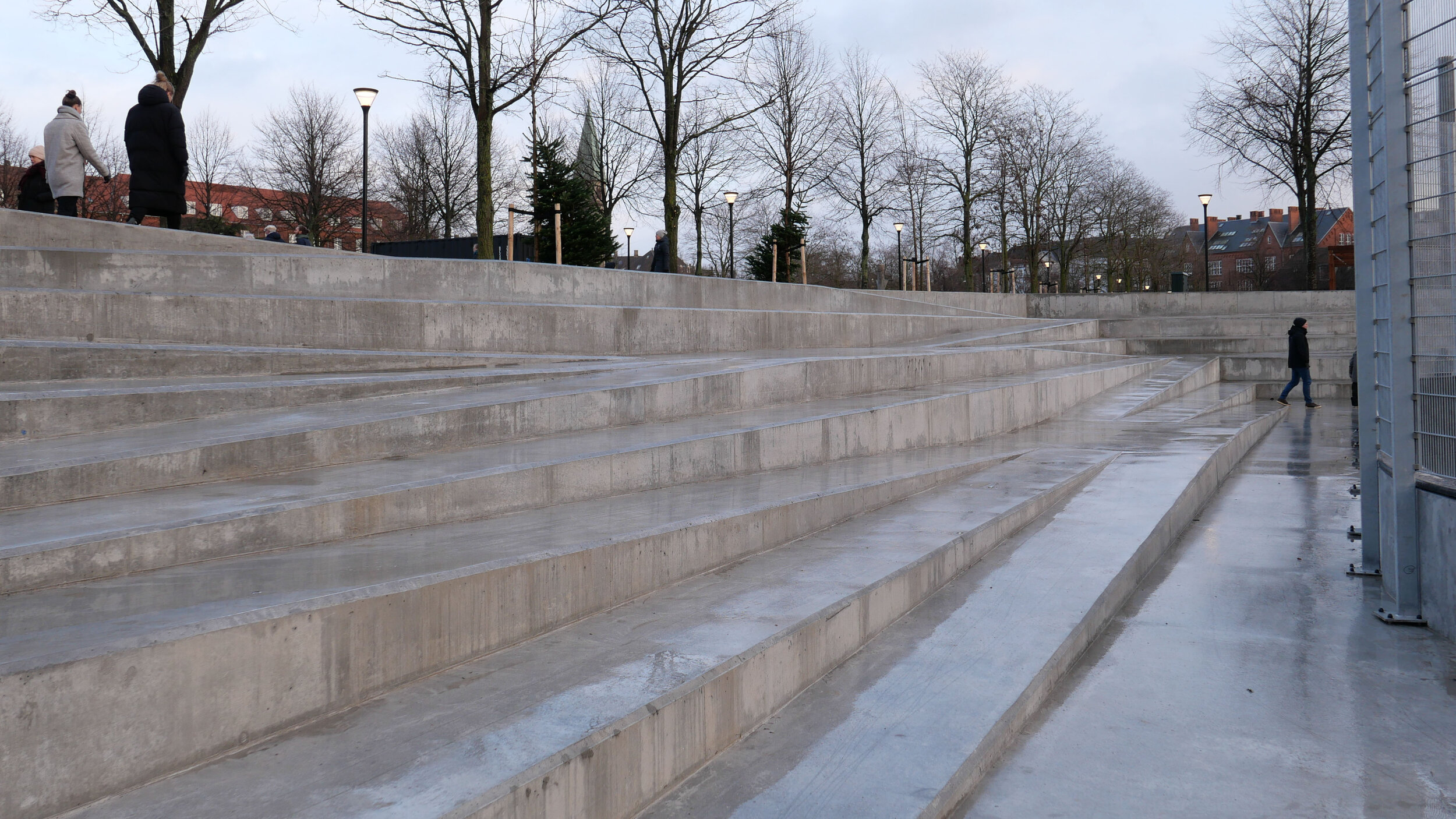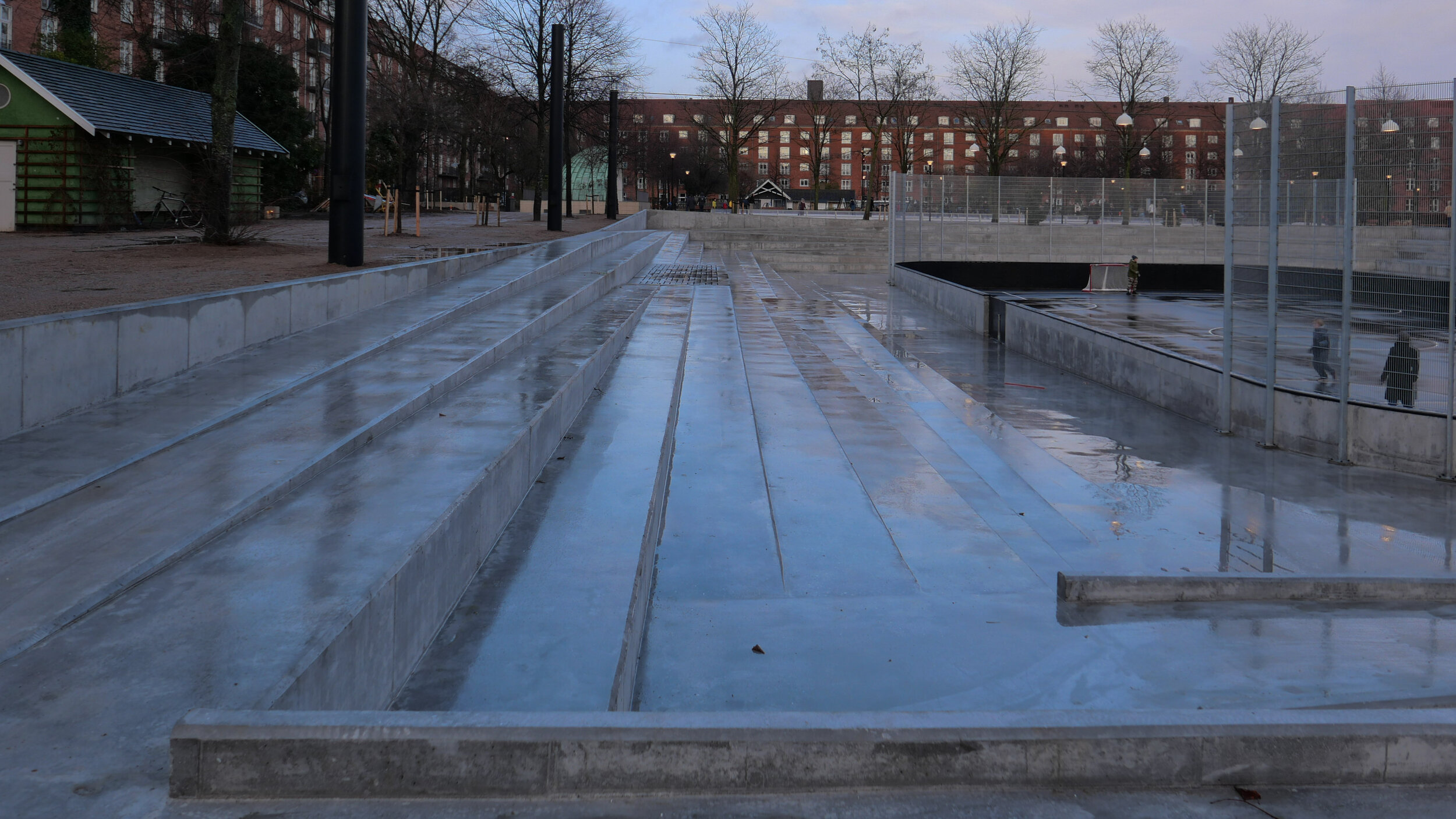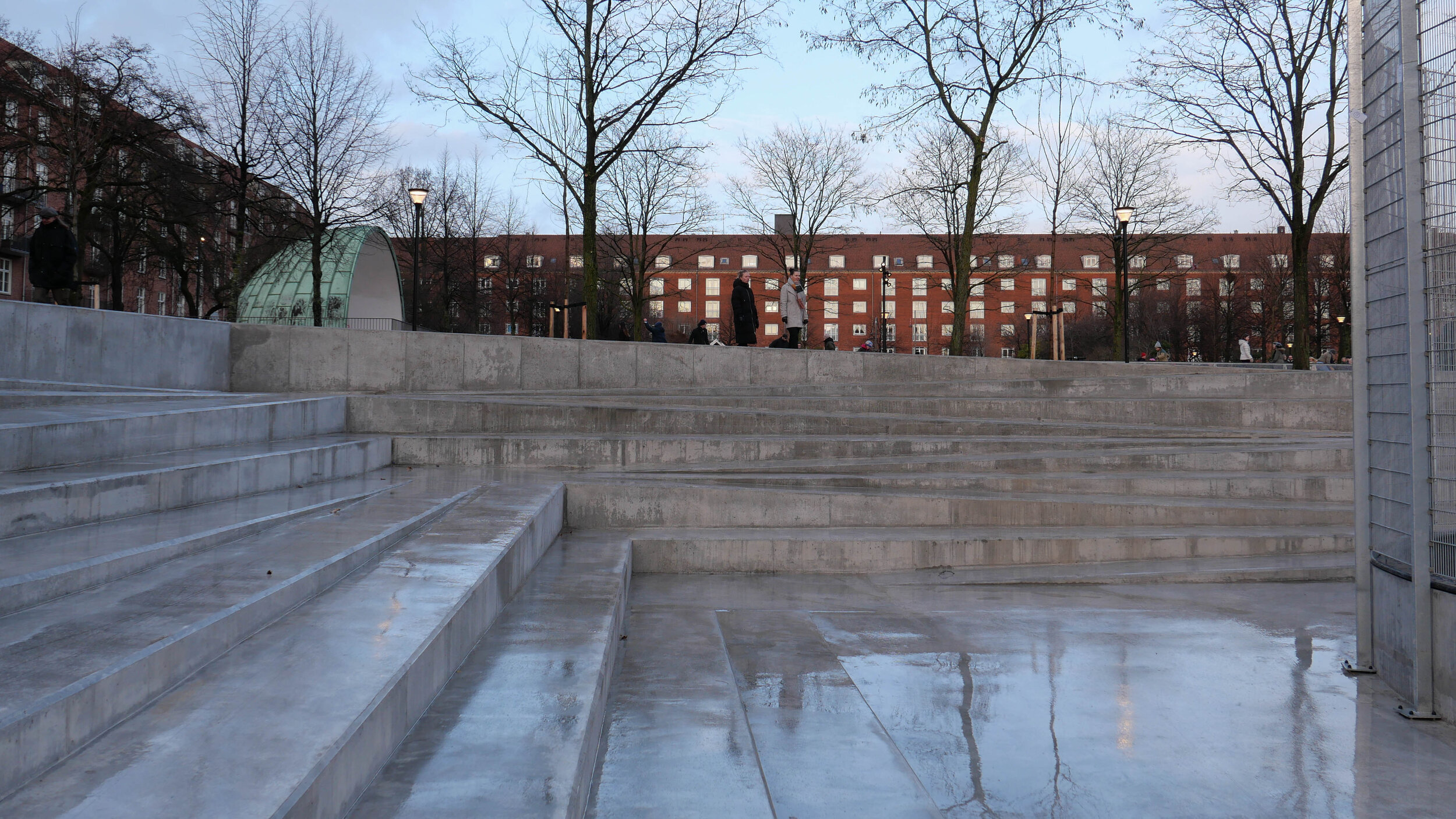Enghave Parken - restoration and climate-change mitigation
/November 2015
December 2019
Enghave Park was laid out in the 1920s on land that had been allotments. The overall design for the park was by the City Architect Poul Holsøe (1873-1966) who also designed the brick apartment blocks that were built around the large square and work was completed by 1929.
Holsøe was a leading proponent of neo-classical or classically inspired architecture in Denmark in the years around 1920 and he was a leading architect in Landsforeningen Bedre Byggeskik - the National Association for Better Building - so advocated robust and honest architecture that was based on well-established and traditional building methods. The apartments have a simple and almost stark but solid form, stripped of decoration and based on good and carefully-considered proportions. The square itself has a regular layout with avenues and cross-walks that form regular and slightly formal rectangular or square spaces and was the work of the city landscape architect and gardener Valdemar Fabricius Hansen (1866-1953).
An obvious source of inspiration was formal Renaissance gardens and specifically here the King's Garden in Copenhagen that was laid out in the early 17th century.
The public square - Enghaven Parken - is at the west end of the Copenhagen district of Vesterbro so it is between Vesterbro and Carlsberg. The Carlsberg brewery was established in the second half of the 19th century on higher ground west of Copenhagen and south of Frederiksberg. Vesterbro, a suburb outside the old city, grew rapidly around 1900 and was markedly working class with many of the families employed in the railway marshalling yards; the meat market; the port to the south and, of course, in the Carlsberg brewery to the west and then, from the 1930s, in the power station HC Ørstedsværket.
The streets of apartment buildings in this part of the city are about as far from a regular grid as you can get with the position and alignment of streets reflecting earlier field and property boundaries and the piecemeal way in which the area developed. Many of the cross streets do run north to south but several of the main roads are at angels including Istedgade and Sonder Boulevard that run down towards Enghave Plads from the central railway station.
Ny Carlsberg Vej, crosses the area, and was the main road to the Carlsberg brewery. It runs approximately from south east to north west and is the road that runs through the famous Elephant Gate at the centre of the brewery site.
Ny Carlsberg Vej forms the south side of Enghave Plads and the main north to south road - Enghavevej - runs across the east side with the main entrance into the park from Enghavevej. Across the west side of the park is the cross street Ejderstedgade and Lyrskovgade runs across the north side. Early photographs indicate that the long apartment block along Lyrskovgade was the last block that was completed sometime after the park.
Because of the different angles of the streets, the area of the park is not square but slightly tapered - splaying out from 170 metres wide across the entrance frontage towards Enghavevej to a width 208 metres across the back. On the central east-west axis, the park is 197 metres deep from the entrance to the back boundary.
The outer edge has a relatively high fence with a series of entrance gates marked by bold, simple stone gate piers and the park had a fairly solid hedge around the perimeter, immediately inside the fence. Some have criticised this as making the inner area of the park seem isolated or cut off from the adjoining streets although the other way of looking at this is to say that the inner area of gardens and lawns is peaceful because it is protected from the noise of traffic and the noise and overview of people on the streets and in the housing blocks around.
Inside the park, much of the area, perhaps surprisingly, is wide gravel walks. Inside the main gate was a long rectangular area of gravel running back on the main axis although early aerial views show this was planted with trees. Beyond that entrance area is a shallow rectangular lake 45 metres long on the axis by 27 meters although it was not given it's final form until the 1940s. The edge of the lake was marked by a border planted with flowers.
Beyond the lake and still on the central axis was a further large gravelled area and then a bandstand that is just in from the west boundary. This bandstand is a simple copper-covered shell, in effect a quarter of a sphere, that is designed to project sound forward. It is raised up on a stone plinth that forms a stage with facilities for performers in the basement. There is a shallow decorative relief in plasterwork, within the otherwise smooth and plain shell. By Aage Nielsen-Edwin - it is a classical scene depicting Apollo and the Nine Muses.
Inside the entrance to the park is a small statue of Venus by Kaj Nielsen (1882-1924) and then in 1933 one other statue was added - Youth by Einar Utzon-Frank (1888-1955) Danish sculptor, professor at the Royal Academy, and uncle of the architect Jørn Utzon - but it is noticeable that there is less sculpture here than in the older parks in the city.
The areas to the north and south of the central axis had lawns and planting with shrubs and perennials in the garden to the north and formal rose gardens and pergolas around the main lawn to the south. There was a play area north of the bandstand and sports courts in an area to the south so at the south-west corner of the park.
historic aerial view with Enghave Plads in the foreground - the site of the recently opened Metro Station and with Carlsberg Brewery in the background at the top of the view
the restored pergola at the west end of the Rose Garden with the statue
Youth by Einar Utzon-Frank added to the park in 1933
the lawn of the Rose Garden in December 2019 as work is completed
the north part of the garden from the west so looking towards Enghave Plads
1 - Playground
The manned playground has been opened with increased access from the park
2 - The Scene
The site has been renovated and will serve as a skating rink during the winter months
3 - Fountain
The fountain garden In the middle of the park where, during the summer, there will be recreational play with purified rainwater
4 - Multibanes
The multi-sport court is recessed by 3 metres and has integrated seating as well as rainwater retention capacity
5 - Library Garden
The plan of the garden has been brought back to the original and is a tranquil perennial garden for picnics and informal stays
6 - The Lake
Centrally located is the lake with a permanently lowered water level, which provides extra cloud burst capacity.
7 - Foyer / Entrance
The entrance to the park is framed by two restored Arne Jacobsen stalls, from which there will be outdoor seating
8 - Rose Garden
In Rosenhaven there are old scented roses in the beds and on the two pergolas. The garden has been submerged by 0.5 m and will hold rainwater both on the garden and also underground in pipework that takes 2000 m3 of storm water.
Arne Jacobsen at Enghave Parken
The band stand and pavilions on either side - both with shelters and toilets under a pitched roof covered with wood shingles - were restored in 2016 and the original pale-green colour reinstated along with trellis for climbing plants.
Research for the restoration work was undertaken by Bente Lange and it would seem that in looking at original drawings in the city archive it was found that the designs for these buildings were by Arne Jacobsen (1902-1971) . He had just graduated and was working in the office of Poul Halsøe before he established his own architectural practice in 1929. The drawing style and handwriting on these drawings have been attributed to Jacobsen by experts and so these are some of the architects first known works.
These three buildings are not in a style that would normally be associated with Jacobsen's work although some of the first houses he designed in Ordrup and Charlottenlund were in a simple vernacular style and the house for Mrs Steensen at Krathusvej 3, has a roof with a similar low pitch and with the ends of the rafters exposed along the long sides.
More important, in terms of the later architectural style of Jacobsen's work, are two small stone and glass pavilions that originally flanked the main entrance gate but were demolished in the 1970s. They too have been attributed to Jacobsen and reinstated or reconstructed as part of the most recent work on the park.
These have side walls in fine ashlar and shallow pitched roofs with the gable ends to the road and to the park but the front and back walls are glazed. The proportions are good and the detail of the steel framework and small touches, like the curved steps to the front and back doors, are superb. These surely are Jacobsen's interpretation of the 18th-century pavilions along the side of the King's Garden that had been added when the high wall around the formal garden that dates from the 17th-century was removed.
one of the entrance pavilions, designed by Arne Jacobsen, demolished in the 1970s but reconstructed from original design drawings in the city archive as part of recent and extensive restoration of the park
stone gate piers at an entrance on the south side of the park with the new flood wall beyond
the bandstand from the north with steps down to rooms below the stage
the restored buildings on either side of the bandstand
the restored bandstand with the area in front with an ice rink photographed in December 2019
photographs survive in the archive of the newspaper Politiken that show that the park was a popular venue for music -
one photograph from the 1950s shows the area in front of the bandstand crowded with people jiving
Climate-change mitigation
Extensive engineering works within the park have just been completed for one of the largest climate change mitigation projects in the city.
A large sections of the south side of the park was excavated to form underground holding tanks for flood water from sudden and potentially destructive rain storms and a concrete retaining wall has been built across the entrance side of the park that returns back along both sides and, in an extreme storm, solid barriers can be raised across each of the entrances and the whole area will be flooded.
The retaining wall has a rill or channel along the top as a water feature and on the left side of the entrance there is a large, shallow, new basin on top of the wall that will fill with water. The form of the basin is appropriately classical in style.
Giant stop taps in the wall give some indication of just how much water the system will cope with in a major storm.
There are holding tanks for water under the rose garden but the most dramatic area of the new flood defences is the sunken courts for games in the south-west part of the park. This has been taken down three metres with a series of angled runs on each side for access and for the rain to drain down but these steps also provide seating for people to watch the sports on the court.
Engineering work has been by Cowi with landscape design work by the Copenhagen studio Tredje Natur.
This is not the best time of year to take photographs but at least with leaves off the trees then it is easier to see how the different parts of the park relate.
The north-east area of the garden with shrubs and trees around the lawn was barely effected by the work so is recovering first but work on the lawn of the Rose Garden is ongoing although the sea of mud here at the moment does show well just how wet the ground gets in rain and how quickly. That part of the garden has also been lowered and the pathways now slope down so rain water flows naturally into the area and will be taken into pipework of a holding tank under the lawn.
The park has had fairly traditional 'municipal' planting but there are plans for greater bio diversity.
Eighty-three new trees have been planted in the park, with 10 different varieties. Most are planted in connection with the re-establishment of the alleys. There will be 11,000 perennial plants, consisting of 55 different varieties in the Library or north-east garden as well as 950 fragrant roses planted in the Rose Garden and over the park 220,000 bulbs have been planted so altogether this will create habitats for urban wildlife including insects and small animals and presumably ducks and herons will return to the lake.
Enghave Parken was formally reopened on 14 December 2019.
account of the restoration work in 2016 by the AP Møller Foundation
drawings by Jacobsen published on line by the Royal Academy Library
Tredje Natur
